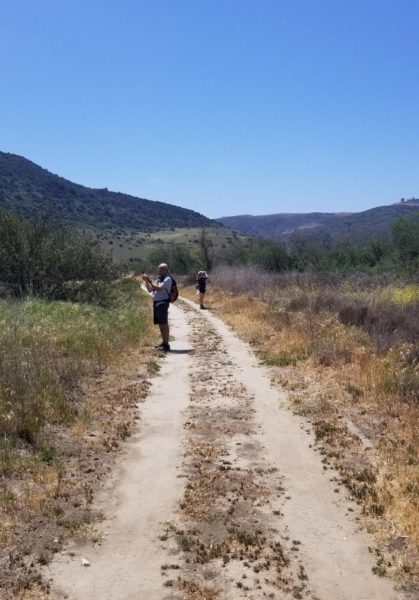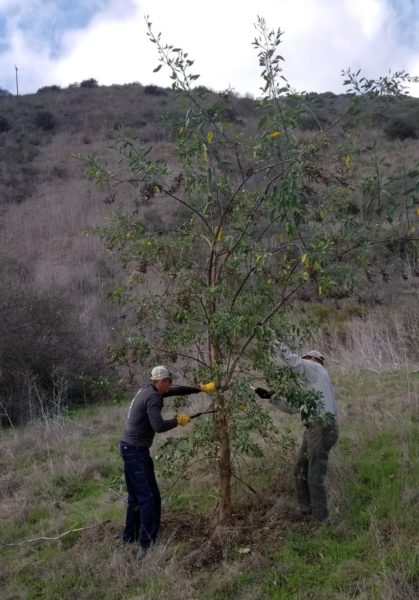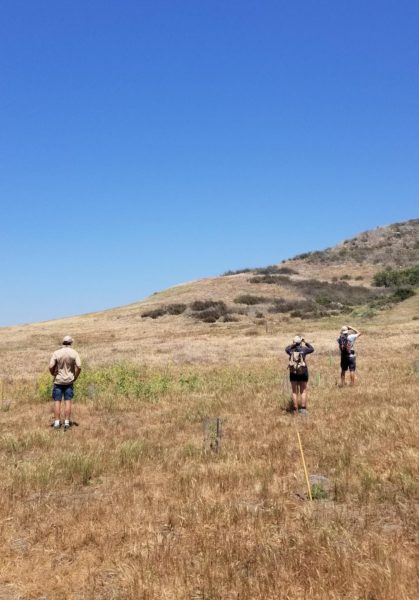Many are surprised to hear that, second only to direct habitat destruction, invasive species pose the greatest global risk to biodiversity. Introduced from areas all around the world, these species lack natural controls in their new environments, allowing them to proliferate, out-compete natives, and change the nature of entire ecosystems. Their detrimental effects come in all shapes and sizes – from the Brown-headed Cowbird parasitizing the nests of our federally threatened Coastal Gnatcatcher, to dense swaths of black mustard displacing precious native habitat and food resources.
The timeline in which an invasive species establishes itself in a novel environment directly affects how well it can be controlled. Black mustard, for example, will likely never be fully extirpated from Orange County. Believed to have been introduced to California in the era of Spanish missionaries, it has had centuries to spread and reproduce, accumulating a countless number of seeds in our soils. Accordingly, for the management of an established invasive like black mustard, local containment is the only realistic possibility. On the bright side, however, the full eradication of an invasive species is entirely possible if they are detected early enough.
Prominent local botanist Ron Vanderhoff and the Orange County chapter of the California Native Plant Society currently recognize around 20 plant species as “Emergent Invasives.” They are of particular priority in our open spaces, because their populations are still very small, if present at all. This means they have the greatest potential to be effectively controlled and eradicated. To do so, early detection of these plants is vital!
Our volunteer Invasive Plant Patrol (IPP) does just that. Simplified, the IPP is a program that gets certified, long-term volunteers out on the trails, patrolling areas in our parks with the highest probability of having new infestations of these emergent weeds. Along the way, they learn about native, non-native, and invasive plants, weed treatment strategies, and all about Calflora, the database we use to share plant observations with local land managers and plant lovers. Volunteers don’t need to be plant experts – ID guides for the emergent weeds are provided and the learning curve is smooth. The IPP is for all experience levels!
As someone who spends most of the work week in the field, the thing that excites me most about the recent rains is the prospect of finding new and strange plants popping up in places I’ve never seen them before. You can find me in the open spaces any day of the week on my hands and knees, examining seedlings and hoping to find something interesting. Compared to last year’s relatively minimal precipitation and seedling germination, this year is on course to be the wildflower lover’s absolute dream! But with that also comes the possibility of the introduction of new weeds. Our Invasive Plant Patrol will be out and about, on the alert for these potential invaders. Interested in joining the team? Joining us for one of our public volunteer events is a great place to start. Pull some weeds or help repair a trail, and get to know LCF and what we’re all about. And for certified volunteers, the next IPP event will take place on April 16th.
For more information on the current emergent weeds of Orange County, check these resources out:
https://www.calflora.org//app/ipl?list_id=px388
https://www.occnps.org/invasives/emergent-invasive-plant-management-program.html



